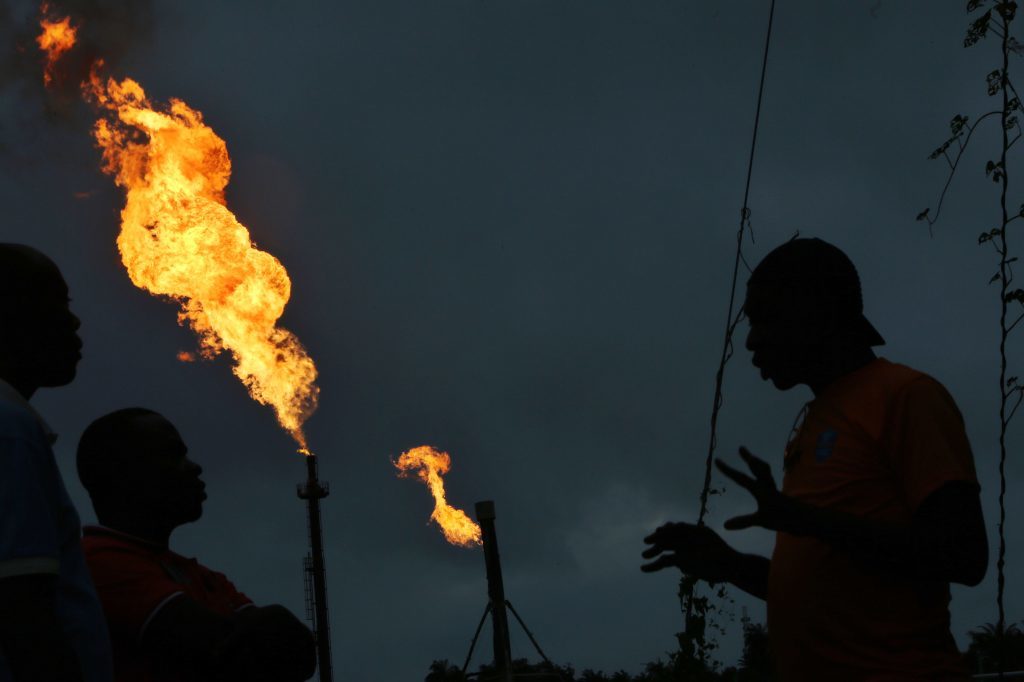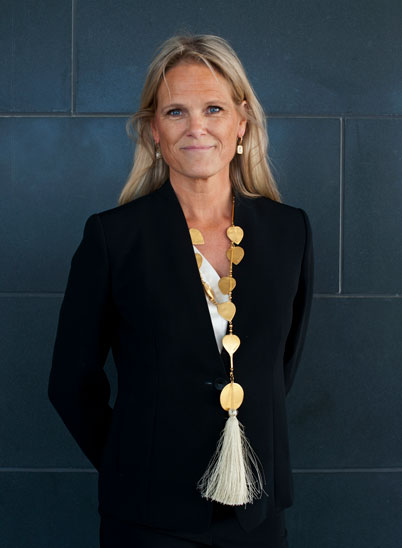
Gas flaring is one of the most wasteful aspects of the energy industry, one Norwegian start-up aims to tackle the problem by using this resource to fuel on-site data centres.
Earth Wind & Power (EWP) aims to capture gas, which would otherwise be flared, using this to generate electricity on site for data processing.
“We have to produce energy to produce the data we need, while also tackling poverty and unemployment,” said EWP’s CEO and co-founder Ingvil Smines Tybring-Gjedde.
“The solution we’ve found is to move data to the flaring site. We can produce data and sell it, through the air rather than having to lay expensive fibre connections. It’s a great way to manage these huge amounts of excess energy,” she explained to Energy Voice.
Fast plans
Once a company has signed up with EWP, the company expects to be able to provide a data centre within six to nine months.
“This is a really quick fix for oil and gas, we’re helping to contribute to reducing poor management of a rare resource,” she said.
“We’re not looking for money from companies. They don’t invest in us. We bear the cost of the data centres. We just take the flared gas,” Tybring-Gjedde said.
EWP’s plan appeals on an ESG front for oil companies. Reducing flaring will tackle emissions, which companies are increasingly focusing on.
Furthermore, the gas will generate power not just for data processing but also local needs. This will allow operators to cut diesel consumption and even provide generation for local communities.
Flare challenge
Tybring-Gjedde previously served as Norway’s deputy minister of petroleum and energy, before becoming Minister of National Public Security. She left government in January 2020.
“I’m happy to be on the side of the table. Politicians always get presented with problems. During my travels I saw the difficult situations around the world, with a lack of energy and the resulting poverty. There’s a need for job creation and climate action,” she said. “This is what we’re doing at EWP.”
The World Bank has reported gas flaring accounted for 142 billion cubic metres wasted in 2020. It named Russia, Iraq, Iran, the US, Algeria, Venezuela and Nigeria as the top seven gas flaring countries. These oil producers account for 65% of the world’s flaring.
Data centres consume around 1% of the world’s electricity – and demand is rising.
Next steps
EWP signed a letter of intent this week with Germany’s Cloud & Heat Technologies (C&H). The Norwegian company has said it plans to buy data centre infrastructure from C&H, which will also oversee set up, operations and commissioning.
“C&H is at the front end of technology when it comes to environmental issues,” Tybring-Gjedde said. The German company’s equipment is able to operate even when temperatures are high.
With EWP focusing on the Middle East and Africa, this is essential.
The executive went on to say that work is under way to use CO2 emissions generated from its gas use. “It’s not enough to just capture it. We’re also looking into what industries use it, so we can create more jobs.”
The EWP initiative is in line with an agreement reached by Norway with leading producers in April this year. With the US, Canada, Qatar and Saudi Arabia, Norway signed on to tackle unabated fossil fuel emissions.
“The first challenge is to decide to do it,” Tybring-Gjedde. “The EWP team is active in discussions. We’re not sitting and waiting.
Gas flaring is a demonstration of excess energy wasted, but EWP has also expressed interest in solar and wind power.
There are occasions when this energy is wasted, the EWP CEO said. The Norwegian company can provide its modular data centres to renewable sites early on, before infrastructure is fully installed.
“We can be an early offtaker and pay for power. Using that money, owners can then build infrastructure, hooking up their facilities to industry,” she said. “It’s not the same problem as flaring gas, but it is about resource management.”
Recommended for you


